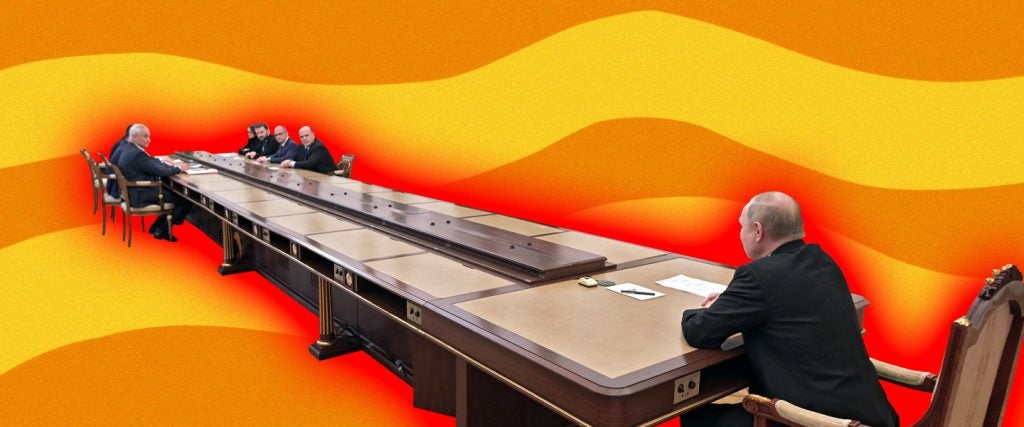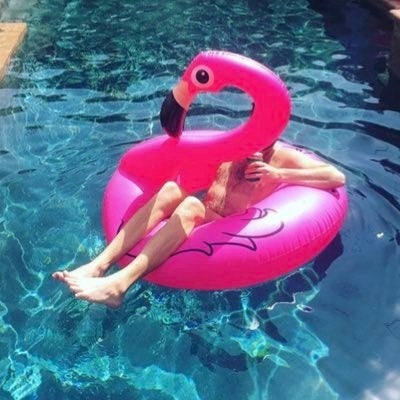As much as Russia’s unprovoked invasion of Ukraine means the arrival of tanks, bombs and soldiers, it’s also an onslaught of propaganda. The words and images, often misleading or manipulated, are meant to project Vladimir Putin’s dominance — or at least justify his deadly aggression. And it appears the autocrat is falling back on a familiar piece of scenery: The ridiculously long conference table.
Putin has arranged for this kind of photo-op before, having received world leaders (including France’s President Emmanuel Macron and Germany’s Chancellor Olaf Scholz) at a 20-foot white wooden table of disputed origin. There’s plenty of speculation as to why he prefers to stage meetings this way — in the case of Macron, who refused to take a PCR test for COVID-19 to avoid handing his DNA to a hostile foreign power, you could chalk it up to social distancing.
It’s less likely that Putin’s own inner circle would fail to take similar health precautions on his behalf. Yet even without an enormous table in the room, he seems to prefer a yawning gulf between himself and his advisors. This could reflect an attitude of more severe germaphobia, or simple paranoia. At least to Western viewers steeped in Hollywood shorthand, though, these distances play on tropes of power and wealth. It’s not always completely serious: In the original Batman movie, there’s the awkward dinner between Bruce Wayne and reporter Vicky Vale at a dining room table that makes conversation impossible. And for their cult-favorite 1996 comedy Brain Candy, the Kids in the Hall wrote a scene in which a smarmy CEO, taking stock of an imposing table, whines to his underlings, “Look, are we ever going to get the big table in here?”
But these jokes wouldn’t land if we didn’t have a deeper, intuitive fear and suspicion of the very long table. The most memorable cinematic use of such furniture comes from the scathing media satire Network, when rogue anchorman Howard Beale is called to the executive offices of his network’s parent company for what he thinks will be a friendly meeting… only to find himself trapped alone with the chairman, who bellows at him like a wrathful god for minutes on end from the opposite end of an empty board room table, which is barely lit by sinister rows of banker’s lamps. Beale, who has spent the whole film ranting and raving, is terrified into obedient silence.
It may well be the chairman’s air of towering, invincible authority that Putin hopes to derive from his tables. On the other hand, he’s not one to show himself in the throes of anger. Most commonly he poses with a tactical expression of sang-froid. That, too, is aided by the outsized working surface — it situates him as a calculating commander, someone who may take reports from subordinates kept at several arms’ lengths but ultimately makes every decision on his own.
Which is why, whatever he hopes to communicate in these photos, they fundamentally don’t work, leading to mockery and memes. Not only do they mirror the American insecurities that make lifted trucks and firearm stockpiles popular here, they show him isolated and unsupported. To appear in control at a menacingly long table, you really need to have plenty of yes-men sitting around it. Either that or be Darth Vader. Or, ideally, give up the villain life altogether.

